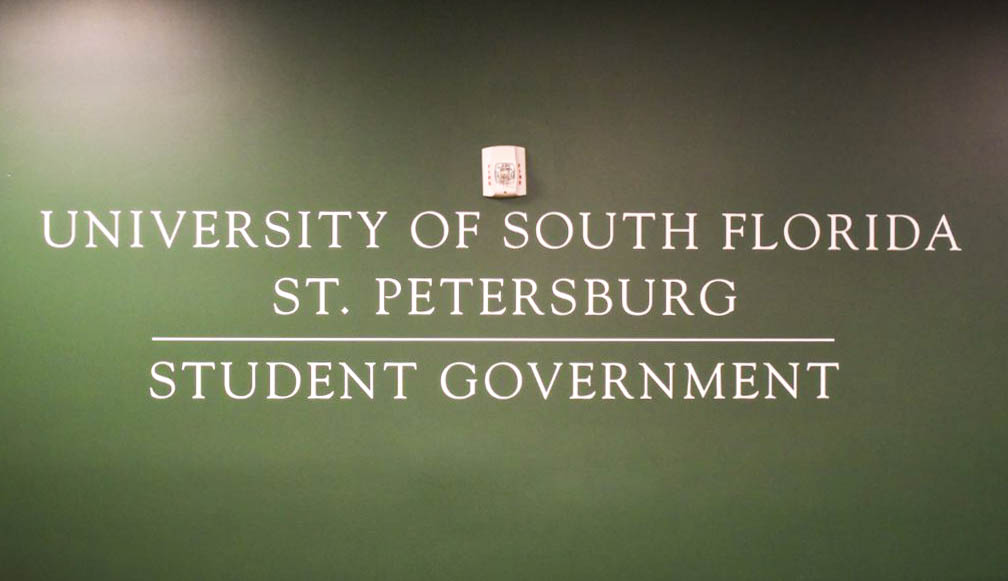The online poll, https://eballot4.votenet. com/usf/casLogin.cfm, will activate at 9 a.m. on Monday and be available until midnight on Thursday. Sign-in is required with your USF NetID and password.Students can also vote in person from 9 a.m. to 5 p.m. Monday through Thursday at tables in the University Student Center and Nelson Poynter Memorial Library.
By Crow’s Nest Staff
When Student Government elections begin Monday, voters will face an array of choices the campus has never seen before.
Gone are the offices of St. Petersburg president and vice president – replaced by less influential jobs called governor and lieutenant governor.
Gone is the St. Petersburg student senate – replaced by a much smaller campus council with less clout.
For the first time, St. Petersburg students will join students in Tampa and Sarasota-Manatee to elect a president and vice president who will serve all three campuses. They will also elect some members of a 60-member, system-wide senate.
The huge changes come because the three campuses of the USF system are being consolidated into one on July 1.
In St. Petersburg, a campus where SG elections have long been marked by low turnouts, the changes seem likely to prompt confusion and – perhaps – further apathy.
There are no websites with information about the candidates for system-wide president and vice president, the system-wide senate, and the St. Petersburg governor, lieutenant governor and six-member campus council.
In fact, only one student qualified to run for St. Petersburg’s campus council and only six students qualified to run for the nine seats that St. Petersburg will get in the system-wide senate.
That means there will have to be a special election this summer to fill those vacancies.
The Tampa campus (42,532 students in fall 2019) is much bigger than St. Petersburg (4,328) and Sarasota-Manatee (1,848). So its SG members will have an outsized say in how things are run and how the revenue from student fees is allocated to organizations on the three campuses.
However, student fee revenue from St. Petersburg students will only be spent on organizations, entities and initiatives on the St. Petersburg campus — though all of those services will be available to students on all three campuses, according to Bob Herron, assistant director of Student Government advising, training and operations.
In the senate, each campus is guaranteed five seats, with the remainder determined by student population. That means, at least initially, that Tampa will get 44 of the 60 seats; St. Petersburg, nine; and Sarasota-Manatee, seven.
Students can vote for only senate candidates from their own campus.
”The only race everyone (on all three campuses) votes for is the President/VP race,” Herron said in an email.
“The Governor/LT Governor; Senator; (campus) Council races are all campus-specific.”
Candidates for St. Petersburg’s campus council and St. Petersburg’s seats on the system-wide senate need a minimum of 25 votes to be elected, said Maria Starr, supervisor of elections in St. Petersburg’s SG.
Two St. Petersburg candidates are running for two positions. Jonathon Hatzistefanou is a candidate for both governor and senator, and Eran Fruehauf is a candidate for both senator and campus council representative.
If they are elected to both positions, they would take the higher one.
Also on the ballot are two referendum questions.
In the first, voters are asked if they want to renew the Student Green Energy Fund, which uses revenue from a student fee of $1 per credit hour for “investing in alternative energy, reducing waste and improving conservation on campus.”
In the second, voters are asked to pick between two designs for USF’s 2020-2021 “OUR shirt,” which students and fans can wear at university athletic events. The two designs can be seen here.



